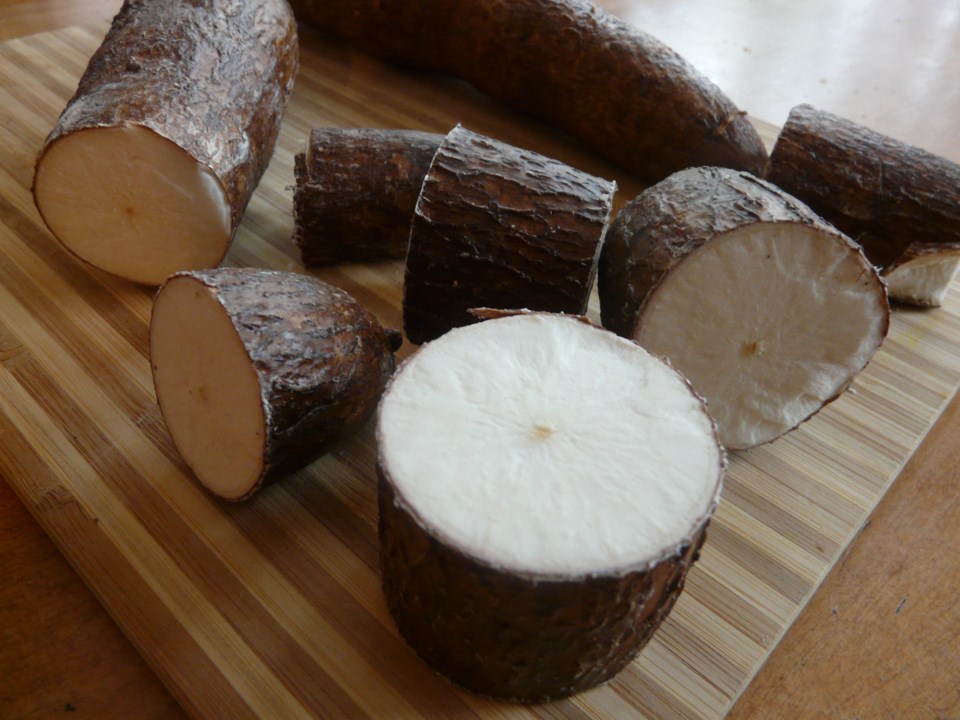ST. PAUL – A collaborative project to use forage cassava as livestock feed will be conducted in northeast Alberta.
During the County of St. Paul Public Works meeting on June 23, a delegation of the project’s partners, including the STEP Economic Development Alliance (STEP), presented information to council about the purpose of the project.
STEP is a regional partnership between the County of St. Paul, Town of St. Paul, Town of Elk Point, and the Summer Village of Horseshoe Bay to manage economic development opportunities and growth in the St. Paul region.
Linda Sallstrom, Economic Development Officer (EDO) of the STEP Alliance, told council the idea behind the project is to use cassava, “specifically for its foliage,” as a food alternative or a nutritional additive to hay or grain for livestock.
Cassava is a starchy root vegetable native to South America. According to information from STEP, forage cassava has a high dry matter (DM) content of around 92 per cent compared to traditional feed sources with DM content of 30 to 91 per cent like alfalfa, barley, corn, oats, wheat grain, hay, or silage.
The plant’s crude protein (CP) content, at around 29 per cent, is also comparable to canola, soybean meal, or field peas with around 25 to 53 per cent of CP content.
Rising costs of traditional food sources like grains and hay are posing significant challenges to the profitability and sustainability of raising livestock, including beef cattle operations, and cassava, if added into livestock feed systems, could potentially alleviate those challenges.
The project received a Canadian Food Inspection Agency (CFIA) approval to bring in two varieties of cassava from Colombia for research purposes, said Sallstrom, which is expected to come in within the next few weeks.
When the cassava varieties come in, the seeds will be propagated by Innotech Alberta at its lab, before being grown by Lakeland College and Lakeland Agricultural Research Association (LARA) the following year.
Sallstrom said the study is among the biggest projects being conducted in the Lakeland, with STEP, InnoTech Alberta, LARA, and Lakeland College also in the process of forming an MOU to potentially secure funding for the project, including securing a Results Driven Agriculture Research (RDAR) grant.
Some entrepreneurs and beef and crop producers are also involved, including Mosh Louisa Biasa Hevi with CassaVantage who brought forward the project, and is presently engaged with the Northern Alberta Institute of Technology and Alberta Innovates as potential partners to the project.
Sallstrom told council other research is already being conducted in the world related to using cassava as a feed alternative, such as how cassava leaves have been successfully used in other countries to replace maize in poultry feed, but more research is required.
“Supplementing livestock diets with forage cassava has been shown to improve feed intake, enhance rumen ecology, and increase the digestibility of DM [dry matter], organic matter (OM), and CP [crude protein] in ruminants, all without posing health risks,” also reads information from STEP.
Obioha Durunna, livestock research scientist at Lakeland College, added the project will also involve studying cassava varieties that will not be toxic to animals or would bring any kind of diseases.
Council asked several questions related to the risks and viability of using cassava as feedstuff, including a question from Reeve Glen Ockerman who asked, “Can we grow it here?”
“[We can] grow and use it.” Durunna responded, adding cassava can adapt to marginal lands and is resilient to drought conditions.
Ockerman said he is excited about how the project will go. “It could be changing the agriculture industry in northern Alberta,” said Ockerman.
In a follow-up with Sallstrom, she said STEP is visiting other stakeholders, including producers, seed cleaning plants, seed companies, and other municipal councils, to get early adoption into the project.
Because if the research is successful, early adoption makes cassava easier and faster to commercialize as feedstuff if people are already aware of it, she said.
“What I'm really excited about,” no matter the outcome of the project, “is this demonstrates that we can do research at this level across this region,” added Sallstrom. “Which just shows that we are an agricultural player in the province.”



